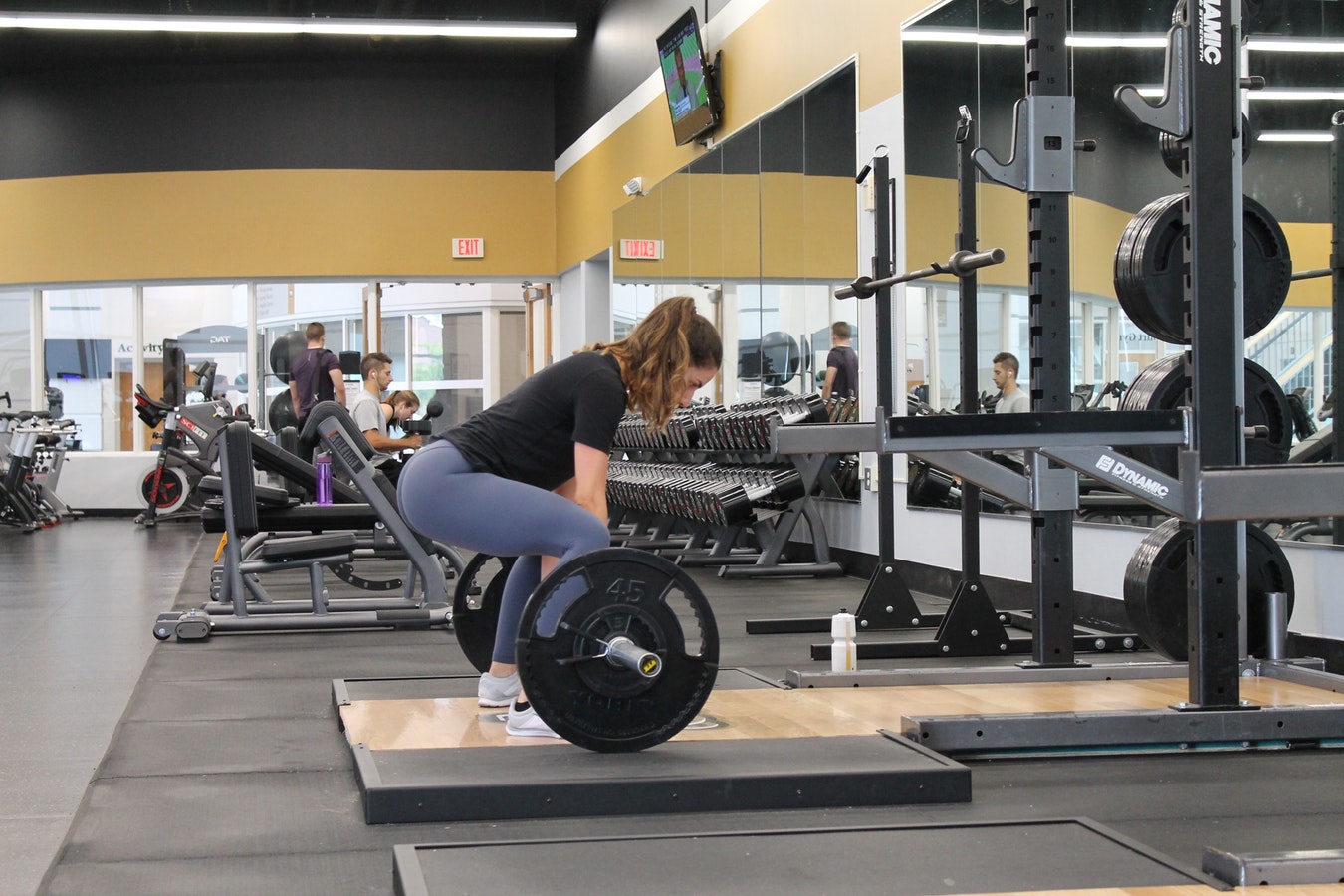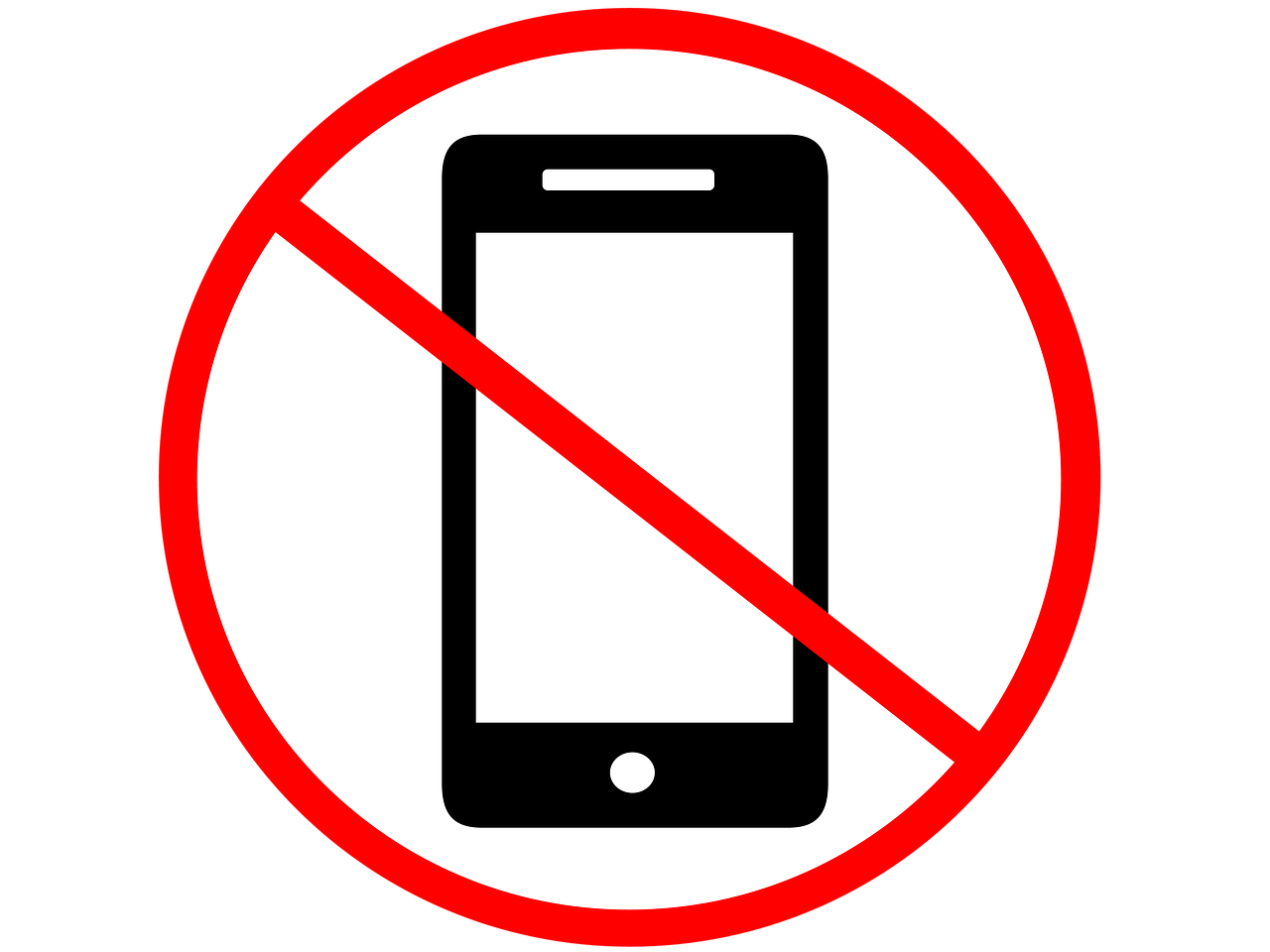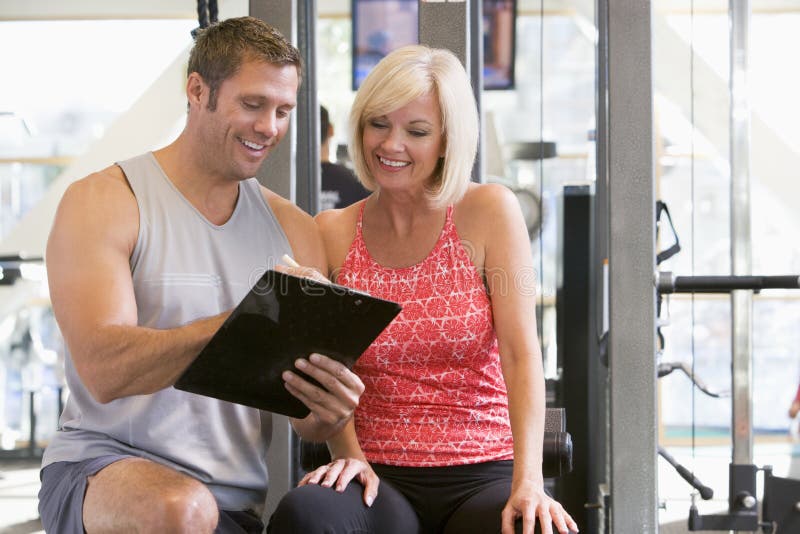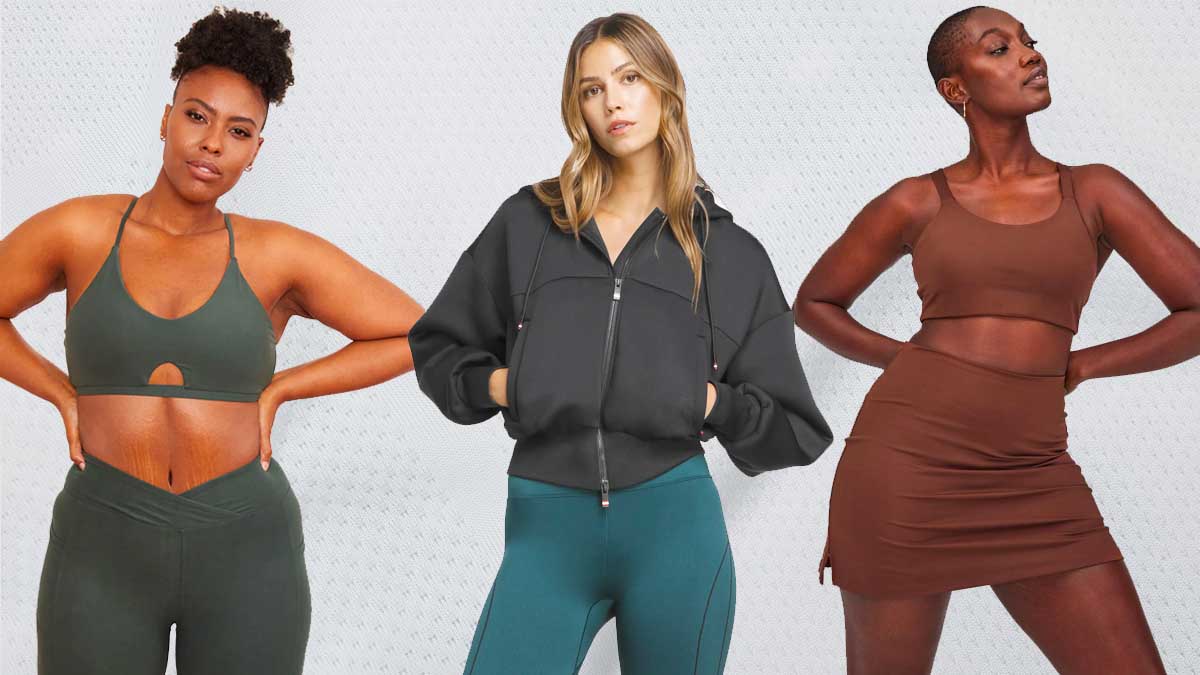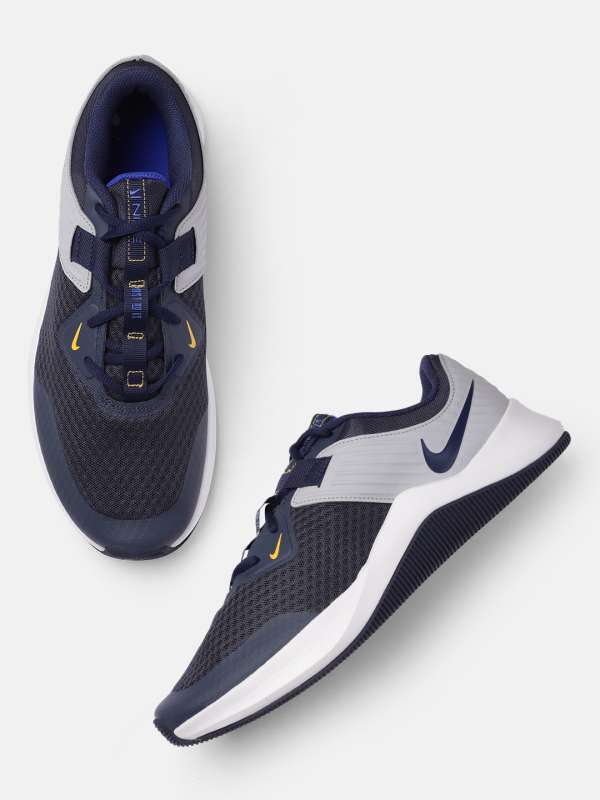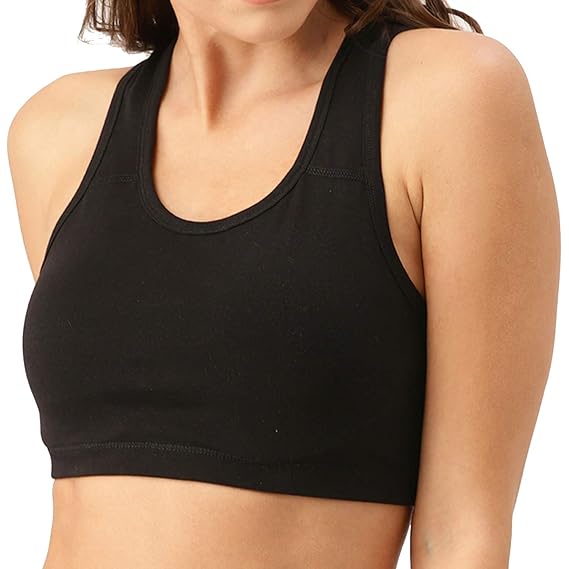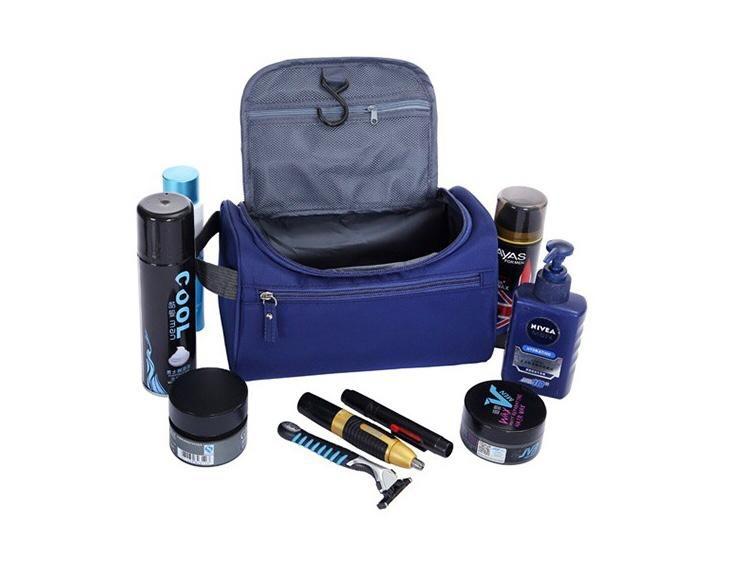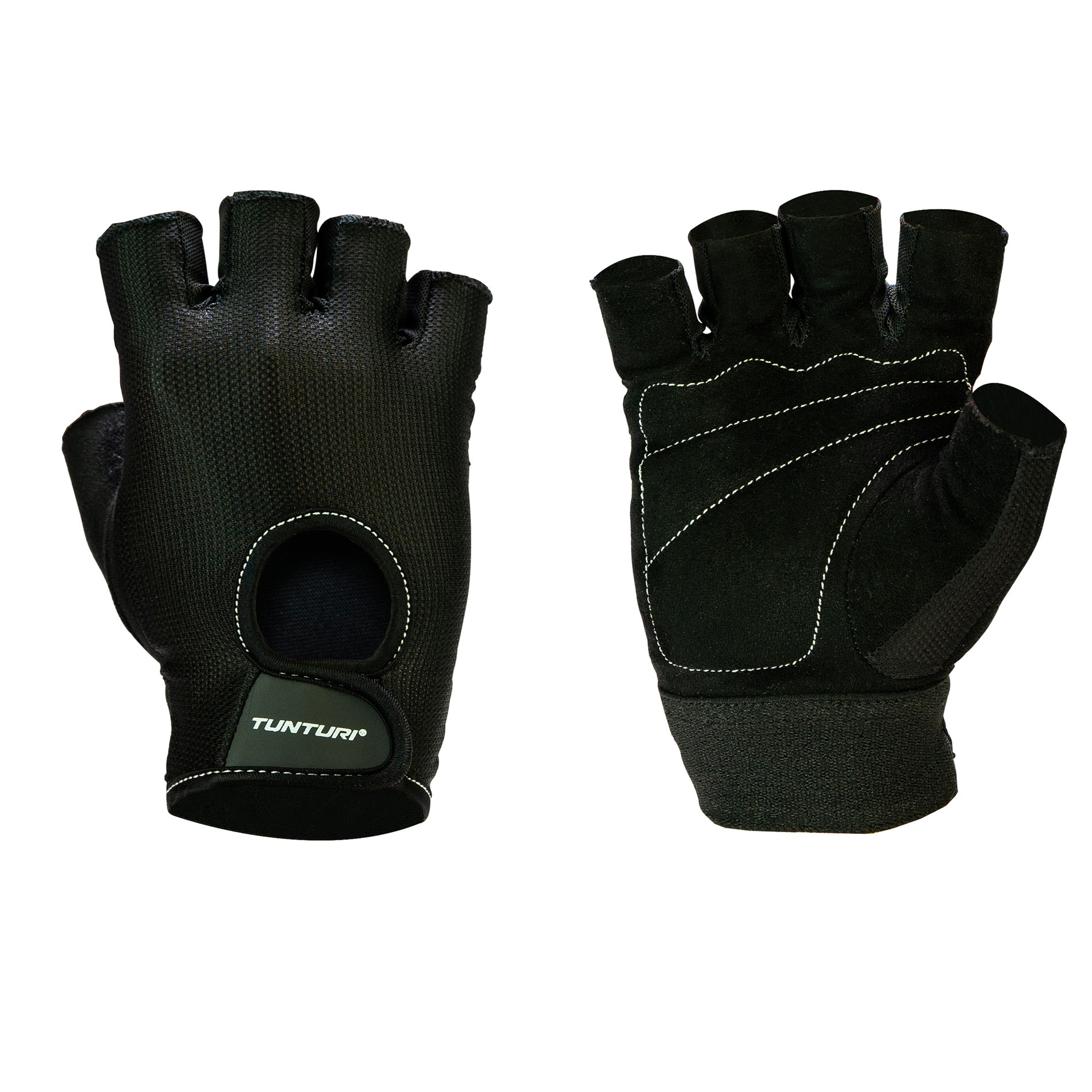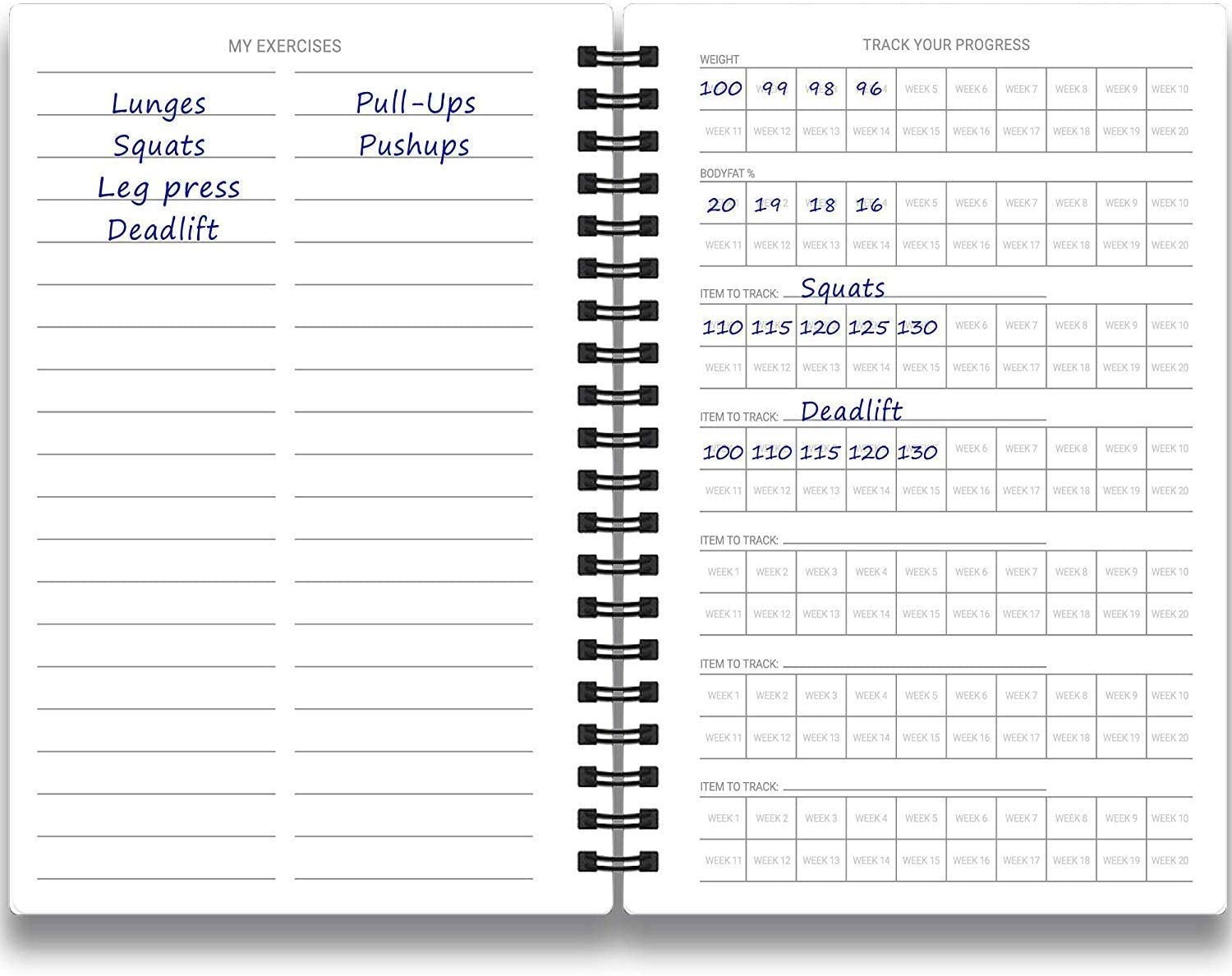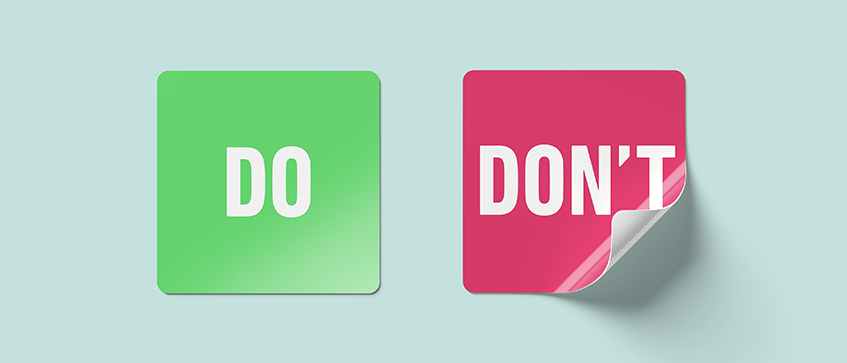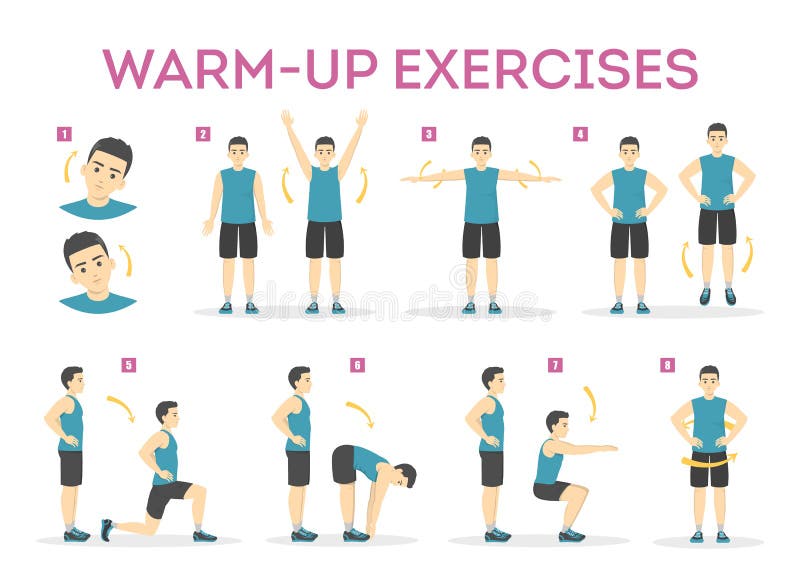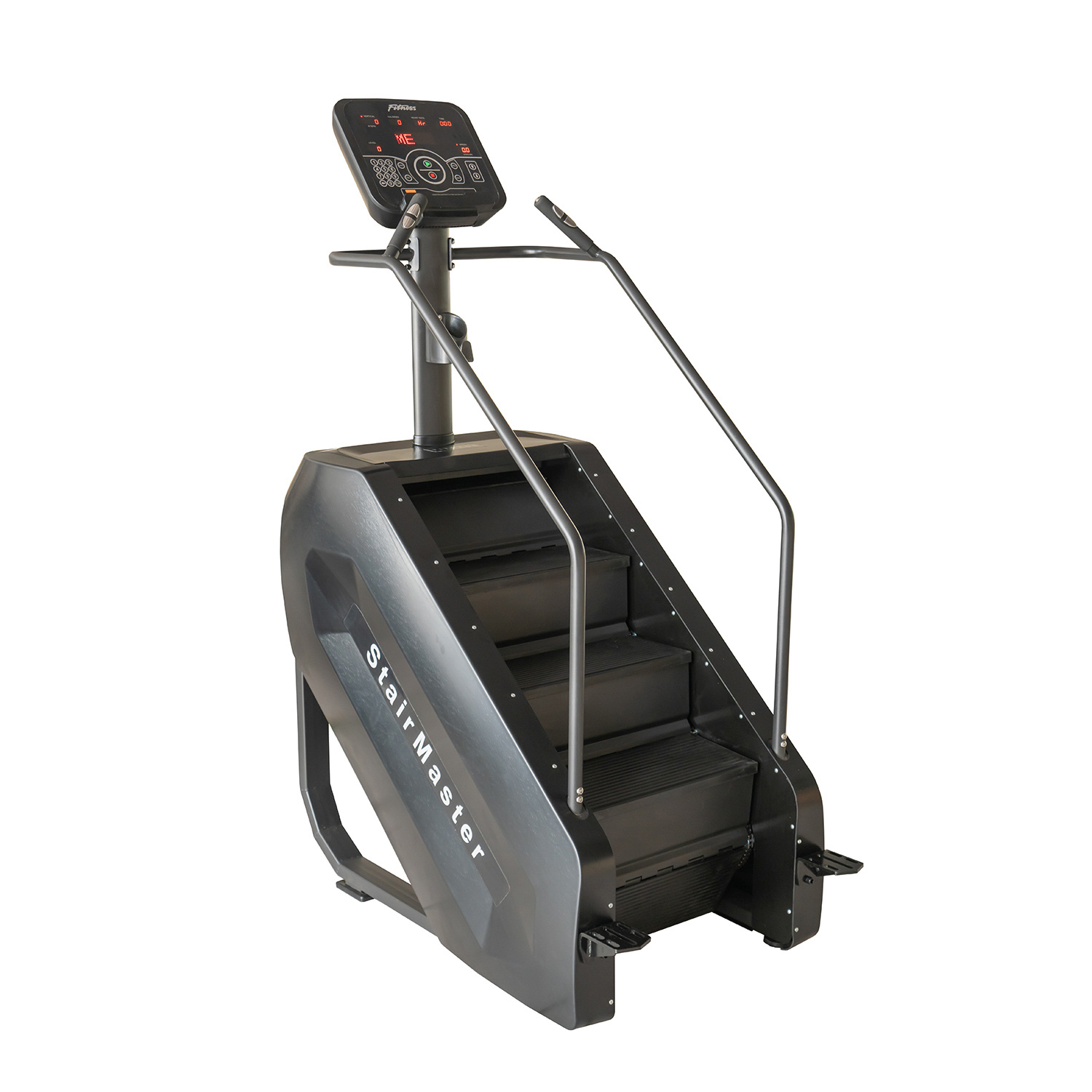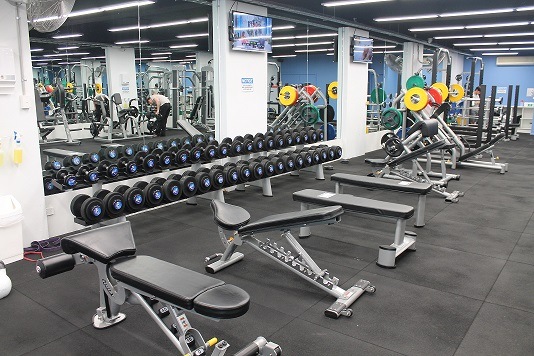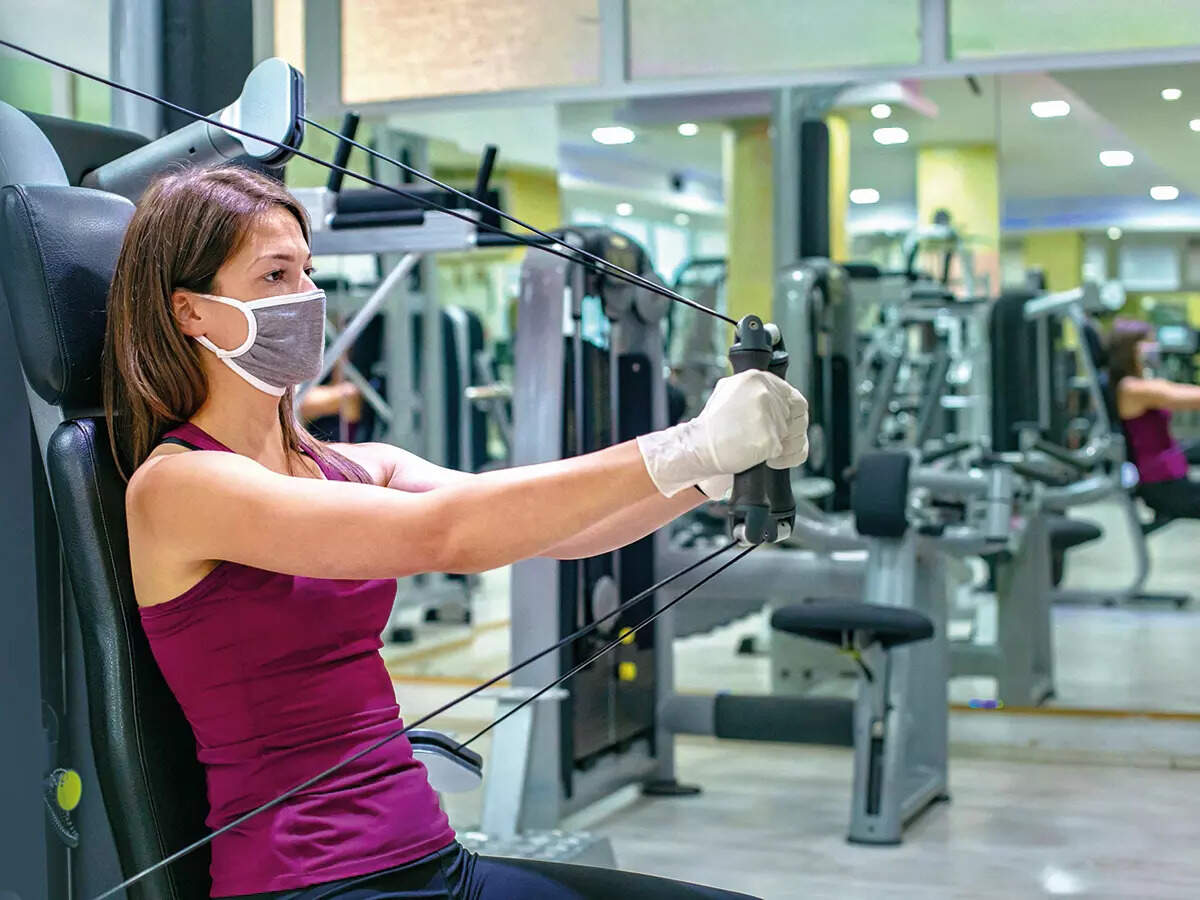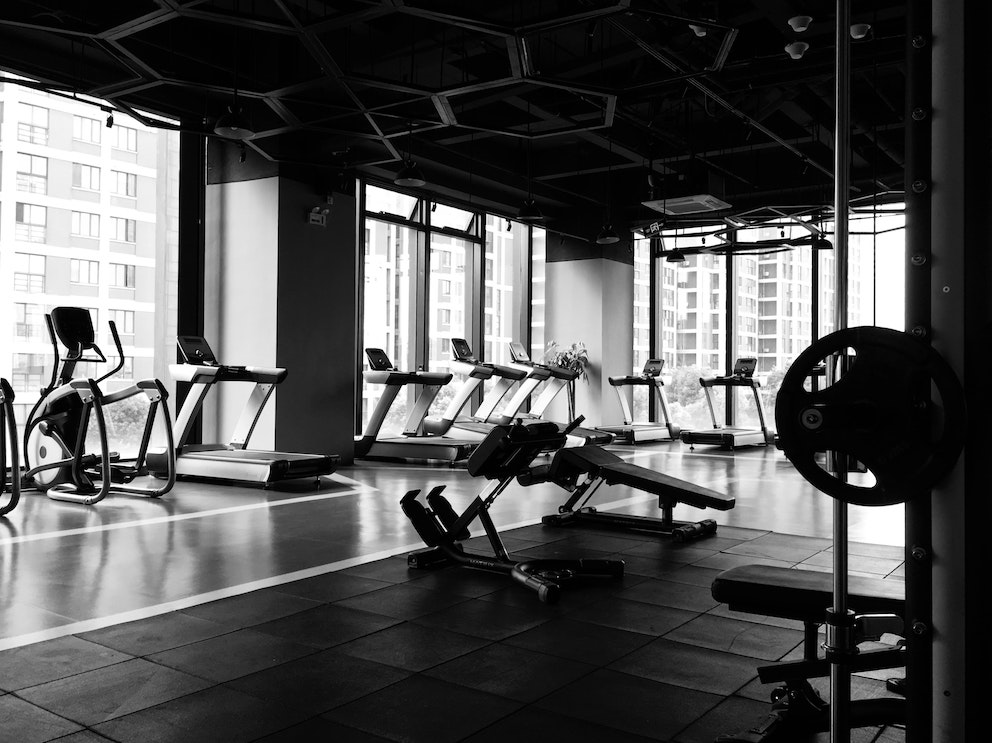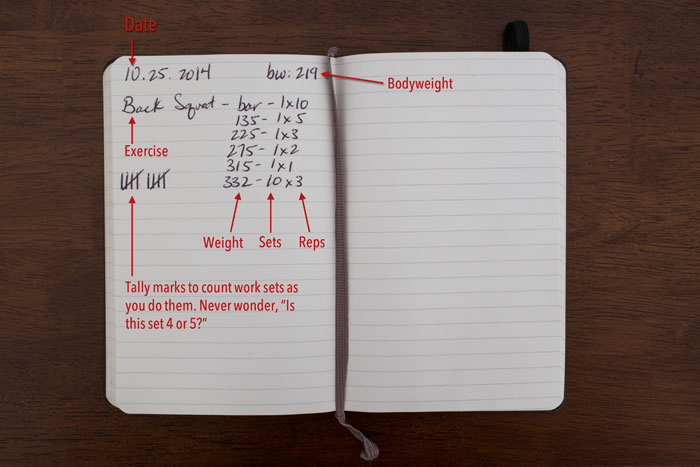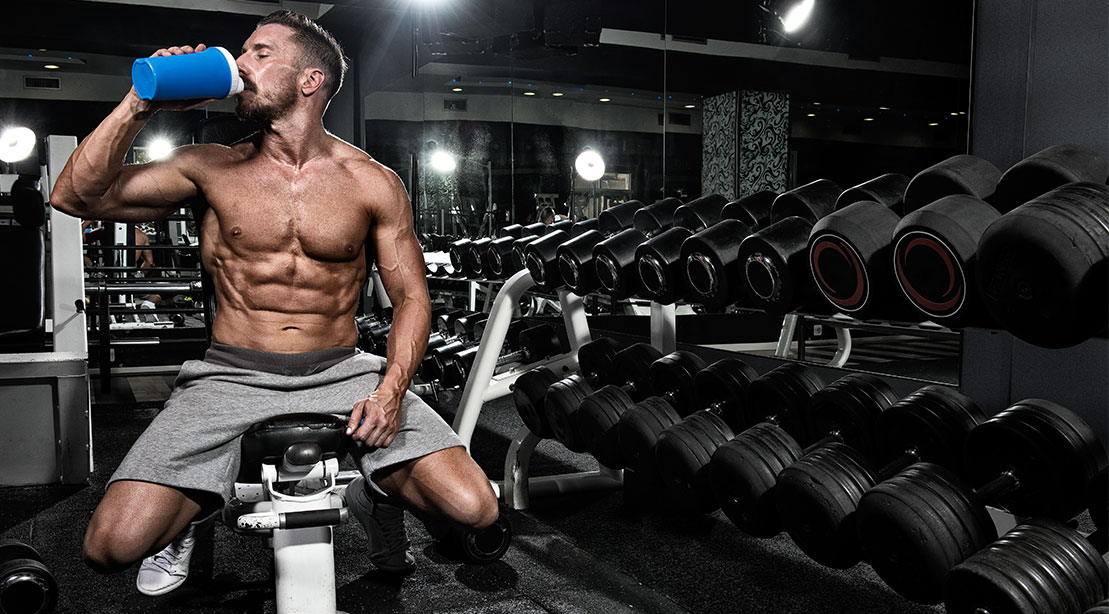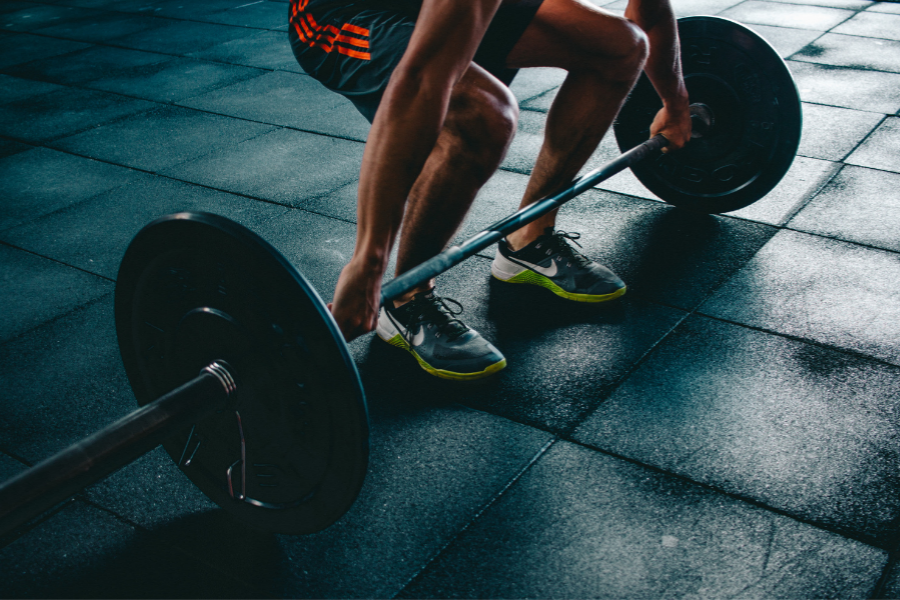You’ve finally decided to enroll in a gym membership. Congratulations on taking such an important step. You must now go to the gym.
The first moment you enter a gym can be very intimidating. Muscle men are making strange grunting noises, dropping weights on the floor, and displaying intense facial expressions.

Then there are the women who are in incredible shape. Even if they just threw their hair up in a ponytail, they look great and appear to know what they’re doing. It’s exhausting.
It can be scary if you don’t understand what to do in the gym or have never been to one before. What is the purpose of all machines? How do I put them on? Is everybody staring at me?
That’s why we’ve compiled the top tips for your first time at the gym, covering everything from what to load in your gym bag to creating your own beginner’s workout. After reading this guide, you’ll understand everything there is to know about working out in the gym and achieving your fitness goals.
The bare minimum of the top tips for your first time at the gym
You’re at the gym for the first time, confused about what each machine does. Where do you even begin?
First, take a look around the facility. At the very least, you’ll learn where the locker rooms are.
Next, schedule five sessions with a personal trainer if you can afford it. This is an excellent way to learn how to use the equipment at its full potential. You’ll be able to improve your form and establish a consistent workout routine. Plus, you’ll see a friendly face whenever you go to the gym.
If you can’t afford a trainer, have one show you around for a few minutes. You should be able to speak with a trainer at a good gym. Trainers will usually show you two to three different machines and help you gain confidence on the gym floor. Don’t be afraid to ask for assistance.
Here’s some gym etiquette to be aware of:
- Please bring a towel: Some gyms provide towel service, but most do not. If you’re uncertain, call ahead and ask, or just bring your own.
- Reduce your cardio time: If the gym is crowded, limit your time on a cardio machine to 25 minutes. If you want to do more, you can do your workout and then finish with cardio. It’s just acceptable to give everyone a chance.
- No Cell phones: Keep your phone at home, in your car, or in your locker. Don’t answer calls if you’re listening to music on your phone. Go to the locker room if you have to take the call. It’s impolite to bother other gym-goers with your conversations or to chitchat on a machine while others are using it.
- When you’re finished using a machine, wipe it down: Let’s face it – you go to the gym to sweat. Just don’t leave it on the machine.
- Make use of the machine: If you see someone waiting on a machine, ask if he or she would like to “work in” with you.
Before starting, here are top tips for your first time at the gym
Requirements for health
The gym is devised to provide everyone with the tools they need to achieve their fitness goals. Anyone is welcome to practice in the gym, whether to tone up or build strength, but before you begin your fitness journey, you may be asked to disclose any medical conditions. This allows personal trainers to tailor a routine to your specific needs.
Here are a few instances of what you might be asked to reveal:
- Existing cardiac conditions
- Diabetes and other chronic medical conditions
- Did you had any major operations in the last 12 months
- Whether a doctor has previously advised you to refrain from exercising
Induction to the Gym
A gym induction is a brief tour of the facility. It goes over gym etiquette (which varies by club), how to use the machines, and how to get to each area of the gym.
A good induction is essential for getting you off to a good start. Staff who run inductions will always have tips and advice that could save you a lot of trouble later on, such as the best times to use what equipment and which exercises are great for beginners.
Top tips for your first time at the gym – What to wear and carry to the Gym?
Although visiting the gym should not be a fashion show, looking good is still important. Besides, looking good makes you feel good. Wearing comfy clothing that you feel confident in and allows you to move freely will help you feel sounder about your workouts and may even keep you motivated. If you have merely begun a new exercise program, this info will help you figure out what to bring to the gym and what to wear and give you some pointers for improving your comfort level.
Clothing for workout
Wearing the right material to the gym should make you feel dry, comfortable, and confident. While exercising, your main focus should be on giving it your all, and you should not be self-conscious or uncomfortable in your clothing.
- Different clothing may be required depending on the type of workout you are doing.
- The cut of your gym clothes should allow you to move freely without constriction.
- Because you will be moving around and frequently bending while exercising, your clothing should be flexible.
- For a good proportion of functionality and comfort, choose clothes made of synthetic materials such as nylon, acrylic, or polypropylene.
- Cotton is probably the most popular workout fabric because it is inexpensive, breathable, and comfortable. However, it absorbs moisture and becomes quite heavy when wet.
- Depending on the weather and your level of comfort, a fitted T-shirt or tank top (made of the materials mentioned above) paired with comfortable pants or gym shorts is an excellent choice for exercise clothing. Follow these gym attire suggestions, and you’ll look and feel great!
Gym Shoes
It’s important to try on several shoes before deciding on one. While in the store, walk around and jump up and down to test the potential shoe. It is also essential to wear socks that you would wear while exercising to find the perfect fit. Furthermore, ensure that the shoe you choose is appropriate for the activity for which it will be used. Sturdy trainers work best for the gym. Avoid weak canvas shoes for working out.
The right running shoe should provide stability, motion control, and cushioning for your runs. Depending on the shape of your foot, you may require a different arch size. To find your best fit, speak with a salesperson specializing in running shoes.
- Walking shoes: The ideal walking shoe should provide a range of motion and cushion.
- Cross-trainer shoes: Cross-trainer shoes are most commonly seen in gyms. These shoes are ideal for someone who runs, walks, and attends fitness classes regularly. They should provide lateral support, cushioning, and flexibility.
Socks
When it comes to gym socks, avoid the dreaded mistake of wearing dress socks with running shoes. Choose white or gray socks that are breathable and comfortable to train in. You should wear socks made of acrylic or an acrylic blend. This material does not retain moisture like cotton and wool, which can cause blisters and other foot problems.
Sports Bra
A good sports bra is necessary to support and reduce excessive movement. In order to allow sweat to evaporate and keep odor at bay, the bra should be made of cotton and “breathable” material such as Lycra mesh. Try on various bras until you find the one that gives you the most support and comfort.
To test the support of different bras, try jumping up and down or running on the spot. The bra you select should fit snugly, providing support while not restricting your range of motion. Check that the straps and band do not dig into your shoulders or rib cage. It should be snug but permit you to breathe comfortably.
MP3 player or personal stereo with carrying case
Bringing an MP3 player or personal stereo with some of your favorite music is a great way to motivate yourself at the gym. High-energy music – or whatever music you prefer – is a great way to start your cardio workout. An armband or waist-belt carrying case (available at many department stores or specialty workout stores) is an excellent way to transport your MP3 player or personal stereo.
Toiletries
Carry a shower towel, bath sponge, shampoo, conditioner, and soap to clean up after your workout.
Hair clips or ties
Bring hair elastics or clips to hold it back if you have long hair or bangs that drop into your face. Nothing is more inconvenient than trying to exercise with your hair constantly falling in your face.
Towel, Flip-flops, Bottle of water
Towels are both a convenience and a necessity. After you’ve worked up a sweat, you’ll be glad you brought one.
Wearing flip-flops in the shower will save your feet clean and prevent the athlete’s foot.
It’s essential to remain hydrated throughout the day, especially during and after workouts. So carrying your water bottle will be of great help. Most gyms have refilling options so you can drink more and stay hydrated.
Gym bag, Lock, Weight-lifting gloves, Training journal
Carry a gym bag large enough to hold everything you need for the gym but small enough to fit in your locker.
Invest in a suitable lock that you can bring to the gym to secure your belongings.
Wear gloves to keep your hands soft and free of calluses when lifting weights.
Maintain a training log to keep track of your workouts and stay motivated by tracking your progress. Bring a training journal with you to maintain the record.
Heart rate Monitor
Wearing a heart-rate monitor during cardio sessions will guarantee that you’re in your fat-burning zone. To calculate 50% to 70% of your maximum heart rate, use the following formula: Subtraction of your age from 220. Divide the remainder by 0.50 for the lower end of your target zone and 0.70 for the upper end of your target zone.
Watch
You may want to start timing your rest periods between sets as you progress. Depending on your objectives, this will ensure that you are not resting for too long or taking too few breaks.
What to Wear to the Gym: Dos and Don’ts
If you’re starting with your exercise plan or want some motivational tips and additional advice, this will familiarize you with what to wear to the gym.
Do
- Dress in clothes that flatter your figure.
- Wear cotton gym socks in white or gray.
- Dress comfortably in yoga pants and fitted tanks or T-shirts.
Don’t
- Wear leotards or bodysuits, popular in the 1980s.
- Dress in your black dress socks.
- Wear bright, eye-catching colors or a tie-dye design.
Top tips for your first time at the gym – First gym session
Warming up
If you’re worried about proceeding to the gym for the first time, your first instinct may be to go straight to the treadmill or weight machine to ‘prove your worth,’ but this is a rookie mistake. Warming up appropriately is one of the most important aspects of a good workout.
Warm-ups are essential because they prepare your body for the demands of exercise by loosening the muscles and lowering the risk of injury. This also reduces your chances of pulling a muscle during your workout and reduces the probability of lactic acid growth, which can lead to cramping.
Where to begin?
It’s time to train after you’ve warmed up and are fully prepared. But where do you start? We’ve got you covered if you’re unsure where to begin at the gym.
Good workouts are meticulously planned ahead of time, not improvised. Those who appear to glide from treadmill to tricep press follow a well-planned schedule designed to maximize the effectiveness of each session.
So, what’s the key to designing a workout that works for you? It’s knowing what each piece of gym equipment is designed to do and how it can help you achieve your goals.
Gym Machines explained
Each machine should be given a brief ‘how-to’ during your induction. If one was left out and you want to use it, don’t try to figure it out on your own; instead, ask a staff member to show you how.
Incorrectly using a machine can cause damage to the equipment or, in extreme cases, injury — not a good way to begin your time at the gym.
Here’s a quick rundown of some of the machines you’ll find in most gyms:
PART 1: CARDIO MACHINES
BEST FOR: Weight loss; heart and lung strengthening.
- Treadmill: A running machine that can provide an excellent cardiovascular workout. You can change the incline and pace depending on your workout type.
- Elliptical Cross Trainer: A dual-action trainer that works your upper and lower body simultaneously. Exercises your hamstrings, quads, glutes, chest, back, triceps, and biceps in a low-impact manner.
- Rowing Machine: Imitates the movements of a rower’s body by substituting a handle and chain for water and oars. A fantastic full-body workout that focuses on your core and burns fat.
- Exercise Bike: A sit-down cardio device that works for your entire leg muscle group. To strengthen and tone your legs, increase your resistance.
- Stair Climber or Stepper: Similar to a treadmill, but with steps! This workout is gentle on your joints while working every muscle in your legs.
PART 2: AREA OF RESISTANCE
BEST FOR: Muscle toning and strength building.
- Chest Press: A more controlled version of a barbell or dual-dumbbell press. Sitting at a 45-degree angle allows you to engage your upper chest muscles without feeling overburdened.
- Chin-up Machine: A machine designed to help you gain strength by simply using your body weight. Beginners can use the assisted mode to help them get started.
- Bicep Curl: A machine that focuses solely on your biceps. Excellent for toning or developing upper arm muscle.
- Tricep Press: This exercise works your triceps, shoulders, and lateral muscles as you push down to lift a weight behind you.
- Cable Machine: Can be used in various ways to work the triceps, biceps, chest, and other muscles. Because it does not use a rigid movement like other machines, it works more of your muscle fibers, which is better for strength building.
- Leg Press: Strengthens and tones your legs by having you push with your feet against a weighted bar. Targets your quads, hamstrings, and glutes – ideal for shaping your backside!
PART 3: ADAPTABLE SPACE
BEST FOR: Conditioning, stretching, rehabilitation, functional training, and freestyle group training.
- Kettlebells: Weights in the form of a cannonball with handles. Ideal for mixing cardio and strength training to burn fat while toning your arms and core.
- Medicine Balls: A weighted ball about the size of a basketball. Ideal for strength training and rehabilitation exercises.
- TRX (flexible suspension system): A rope-like system that allows you to tone up and build core strength by using your body weight.
Weighted Sled: A piece of kit to which you can add weights and push or pull to build strength. Excellent for sports conditioning.
Top tips for your first time at the gym – Using Free Weights
People new to free weights may make mistakes that result in injury. Walking into a gym’s free-weight area and grabbing whatever dumbbell you want can quickly lead to injury if it turns out to be heavier than it appears.
The good news is that free weights are not dangerous if used correctly. Here is how to make the most of this space at your gym.
Beginning with Body Weight Training
Bodyweight training is a type of strength training that does not require using weights. Building strength, not just muscle, is essential.
Bodyweight exercise is a safer way to prepare for weight training than jumping right in. Squats and push-ups are simple ways to train your muscles to work against resistance. Ask your club’s staff for recommendations on where you can strength train. If you’ve never used free weights before, starting with bodyweight exercises is a good idea.
Choose lighter weights first
Begin from the bottom and perform your way up the first time you pick free weights. If you’re working with a barbell, try doing some reps with just the bar. They’ll surprise you with how heavy they are. If you’re feeling self-conscious, remember that experienced dead lifters still warm up with the bar on its own, so you’re not alone.
Remember the Etiquette
There are a few conventions to obey in the free weights area:
Do not drop weights: Dropping weights poses a safety risk. Not only that, but it also harms the kit and annoys the other members. Instead, when you finish your sets, slowly lower the weights back to the floor.
Put weights back: Nothing is more frustrating than getting halfway through a workout only to discover that the next set of dumbbells is missing because they were misplaced. When you’re finished with your weights, return them to their proper location on the rack.
Ask for a spotter but be considerate: Some exercises, such as the bench press, are dangerous to perform without a spotter. The staff at any gym is always willing to assist, so ask if they could spot you or try one of the machines instead. If you don’t have to, don’t drag someone else out of a focused workout.
If you’re unfamiliar with using free weights, don’t be afraid to ask a staff member for some pointers on your technique. That’s why they’re there!
Top tips for your first time at the gym – Beginner’s Gym Workout
Now that you’re familiar with the equipment, it’s time to put it to use. This example workout uses various gym equipment and works your entire body; if done correctly, it should take 45 minutes to an hour.
Cardio for 5 minutes
A 5-minute fast-paced incline treadmill walk raises your heart rate and mobilizes your joints. You can simply select the ‘Quick Start option.
Resistance Workout
Choose a weight that you can raise comfortably for 10 reps. The last few reps should be extremely difficult! Complete three sets of ten reps for each of the following exercises, with a 60-second rest between each set.
Dumbbell lunges
Leg press
Dumbbell shoulder press
Lat pull-down
Cable chest fly
TRX planks (3 sets of 30 seconds)
HIIT cardio circuit
Cardio Circuit HIIT
A HIIT (High-Intensity Interval Training) circuit is made up of contrasting training intervals that consist of brief but intense bursts of exercise (at maximum effort) followed by low-intensity recovery or rest periods.
Repeat the following HIIT 5 times with minimal rest:
ten burpees
ten press-ups
ten sit-ups
Stretching and cooling down
Stretching and chilling down after a workout is critical for injury prevention and can be as simple as a 5-minute walk on the treadmill.
Also, Read Skin Removal Surgery Cost- 3 Best Ways To Pay For It!
Top tips for your first time at the gym – Booking a Gym class
Attending the gym regularly is an excellent way to achieve your fitness goals. However, if you truly want to see results, you should enroll in a gym class.
Gym classes are led by a professional trainer who will guide you through a predetermined set of exercises. They’re done in groups, so it’s a great way to meet new people while pushing yourself further than you might when training alone.
There are hundreds of different classes to choose from, including yoga and aqua aerobics, boxing, and dance classes. The intensity and duration of each class differ. If you’re just starting, we recommend taking a low-intensity or low-duration class to avoid overworking yourself.
Top tips for your first time at the gym – Booking a Personal Trainer
Classes are great for getting new workout ideas, but they can’t always help you move forward with specific goals. You may need to work with a personal trainer for this.
Personal trainers are fitness professionals who work with clients to design custom workouts and offer advice while exercising.
What can a personal trainer accomplish for you?
- Getting to a healthy weight
- Increasing your strength
- Rehabilitation following an injury
- Enhance their performance in a specific sport
Personal trainers are typically not included in the standard membership fee. However, many gym members believe that even a few sessions when you’re first starting are worthwhile because it gets you on the right track, which means your workouts will be more effective in the future. Personal trainers will also hold you accountable for your goals, preventing you from gradually straying from your routine.
Gym personnel will usually arrange for a brief “meet and greet” with your personal trainer so you can get to know their workout style and they can learn what you want to achieve.
5 Top Tips for your first time at the gym
The 5 top tips for your first time at the gym are:
Don’t go overboard
The fact that you’re in the gym in the first place suggests that you had to shuffle your schedule in order to make time for the commitment.
You’re on your way to stronger bones, bigger muscles, and greater strength. Lifting weights, however, can cause injury if done incorrectly or too frequently. In order to avoid injury, proper form and volume are required.
As a beginner lifter, you (and your muscles) have no idea what’s in store. If you want your gym experience to be long-lasting, limit yourself to three or four exercises on your first day.
You won’t be overly sore, and you’ll be able to recover more effectively for your next workout. There’s no requirement to rush when it comes to lifting heavier weights with perfect form.
Begin with a compound lift
The barbell squat, overhead press, deadlift, and bench press are four important muscle-building lifts.
A good rule of thumb is to do one of these lifts first, then follow up with assistance exercises to build maximum strength, size, and power.
For example, bench press for a few sets first. Then perform another chest exercise, this time a single-joint movement.
One “push” exercise, such as a bench press or squat, followed by one “pull” exercise, such as a leg curl or lat pulldown, is a surefire way to evenly build up your back and chest. Because it’s your first day, use the push/pull exercise order to ensure that no muscle is left behind.
Make a list of everything
You can only truly assess your progress if you know where you began. Begin a training log with all of your current stats on the first day. Record the exercises, sets, reps, weight lifted, and rest periods you take during each workout.
After the workout, consume protein
The most significant thing you can do after you’ve finished lifting is to replenish your muscles with proper nutrients. Your best bet is to eat a high-protein meal or supplement with a high-quality protein powder.
The National Strength and Conditioning Association recommends 1-2 grams of protein per pound of body weight per day for athletes.
Don’t be afraid to seek assistance
Do you require a spot? Do you have no idea what a spot is? Take a moment to seek advice from a trainer or a staff member. They’re there to assist, and unless a trainer is in the midst of a paid session with a client, they’ll gladly assist.
So, whether you need assistance with your barbell back squat form or are simply looking for your medicine balls, don’t be afraid to ask a staff member for assistance. You’ll appear to be an expert.
Takeaway
So that’s it: the gym is no longer a mystery.
These were the top tips for your first time at the gym.
As your confidence grows, you’ll start achieving your goals and developing a routine that keeps you fit, happy, and energized.
Whatever your level of fitness, remember that if you’re unsure about anything during your workout, staff members and PTs are always happy to help.
Frequently Asked Questions
How should I dress for the gym?
You don’t have to dress up in the latest trainers or workout gear to go to the gym — just make sure your garments are comfortable for working out and, unless you’re going straight home, bring a change of clothes.
What should you know about going to the gym?
- Bring a water bottle and a towel with you.
- When you’re finished with your weights and equipment, put them away.
- Avoid using your phone on the gym floor to avoid distracting others.
- It’s also critical to pick the right time to go to the gym.
- If you plan on attending a gym class, arrive 10-15 minutes early to ensure you get a seat, especially if you know the class or teacher is popular.
What if I don’t understand what I’m doing in the gym?
It’s okay if you’re not sure how to use the equipment. It’s even okay if you’ve finished your induction and Personal Goal Setting session and still can’t remember; this is fairly common.
Don’t be concerned if you’re feeling overwhelmed. Keep it simple when you first start, don’t push yourself too hard, and ensure you’re having fun.
The most important thing on that first day at the gym and in the following weeks is that you turn up and then keep showing up.
If you’re completely perplexed about something, ask a member of staff. They are there to assist you.
Do I need to sign-up for a personal trainer?
It is entirely up to you whether or not to hire a Personal Trainer, but they can be beneficial in guiding your workouts.
You are not required to hire a trainer, and you can achieve your goals without one, but there are numerous benefits.
For the first time, I went to the gym. What happens next?
Congratulations on your accomplishment. You’ve just accepted the first step toward a new, healthier way of life. Now all you have to do is keep yourself motivated.
Make sure to mix and match your training. Plan your workouts for the week and when you can go to the gym. Get a friend or make new friends and commit to attending.

